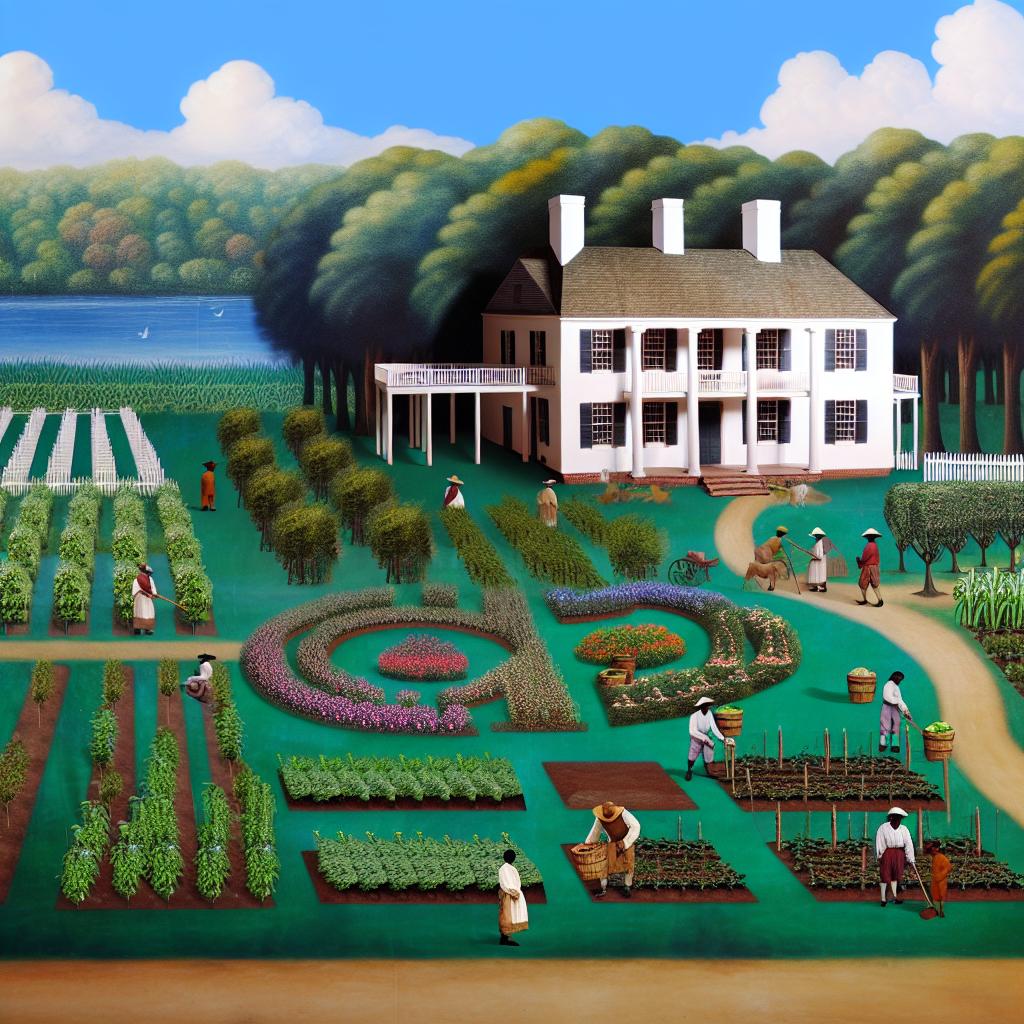Contents
The Origin and Development of Mount Vernon
Mount Vernon, located in Fairfax County, Virginia, is most famously known as the plantation home of George Washington, the first President of the United States. The estate’s history, deeply intertwined with colonial America, offers insights into the complexities of that era.
Early History and Acquisition
Originally known as Little Hunting Creek Plantation, the land was first acquired by John Washington and Nicholas Spencer in a 1674 land grant. John Washington, who emigrated from England, initially invested in this tract as part of the colonial expansion occurring at the time. Over the years, ownership of the land passed through generations, each adding layers to its evolving story. In 1726, Lawrence Washington, George Washington’s older half-brother, inherited the estate. He was deeply influenced by his naval career and decided to rename the estate Mount Vernon. This name honored Admiral Edward Vernon of the British Navy, under whom Lawrence had served with distinction.
George Washington’s Ownership
When Lawrence Washington passed away in 1752, the estate began its transition into the hands of George Washington. Initially, George leased the estate but quickly manifested his vision for Mount Vernon. By 1761, he officially inherited it, thus beginning a proactive period of development and expansion. Washington’s vision extended well beyond the mere expansion of physical lands. He broadened the acreage from 2,000 to 8,000 acres, meticulously planning and transforming the estate into a grand, self-sustaining plantation. Initially centered around tobacco cultivation, Mount Vernon’s agricultural focus shifted increasingly towards wheat and other crops under Washington’s strategic planning. The estate also became a focal point for his burgeoning political and military career, hosting numerous prominent figures and events.
The Architecture
The architectural evolution of Mount Vernon under George Washington’s meticulous guidance is a testament to his aesthetic vision and practical foresight. The modest farmhouse originally present on the estate underwent extensive renovation and expansion to become a stately mansion characterized by 21 rooms. Washington paid great attention to detail, commissioning significant structural features such as the cupola, which not only added an element of elegance but also served functional purposes such as ventilation. He imported quality materials, consulting international architectural experts to ensure the mansion exemplified beauty and grandeur. The architectural design reflected his commitment to sophistication, balancing aesthetic appeal with functionality.
The Enslaved Workforce
An integral yet somber aspect of Mount Vernon’s functioning and development was the enslaved workforce. At its zenith, the estate was supported by the labor of around 317 enslaved individuals, whose contributions were critical to its agricultural productivity and operations. These men and women worked in various capacities — from tending the vast fields, crafting furniture and tools, to sustaining household functions. Over time, George Washington’s perspective on slavery was marked by gradual change. In his later years, his mounting discomfort with the institution led to a historic provision in his will, mandating the emancipation of the enslaved people he owned outright upon his wife’s passing, which was an uncommon decision for a man of his status during that period.
The Gardens and Agriculture
Beyond the grandeur of the mansion itself, Mount Vernon is noted for its intricately designed gardens. These gardens were more than simple ornamental spaces; they exemplified Washington’s dual interest in aesthetics and agricultural innovation. He was deeply involved in the planning and upkeep of these spaces, experimenting with a range of crops across the estate. By implementing innovative farming techniques — considered advanced for his era — Washington aimed to increase productivity and sustainability. Today, reconstructed versions of these gardens offer visitors insight into the era’s agricultural practices and the painstaking attention to detail that marked plantation life.
Preservation Efforts
The preservation of Mount Vernon is a compelling narrative on its own. By the 19th century, the estate, like many sites of historical significance, faced the threats of neglect and potential destruction. However, an initiative led by the Mount Vernon Ladies’ Association in 1853 changed its fate. As one of the pioneering preservation efforts in the United States, this association embarked on a formidable campaign to restore and maintain the estate. Their dedication ensured that the historical integrity of Mount Vernon was preserved, allowing future generations to explore its rich heritage. Today, the association continues to oversee the property, guaranteeing its upkeep and public education on the life and times of George Washington.
Visiting Mount Vernon Today
In contemporary times, Mount Vernon endures as a national historic landmark, drawing countless visitors each year. The site offers a comprehensive view into the life and legacy of George Washington, embodying the broader historical narratives of colonial America. The meticulously maintained mansion, expansive gardens, and numerous outbuildings are preserved with an emphasis on historical accuracy. These efforts ensure that visitors are able to step into the past and critically engage with the social, economic, and political conundrums of the era.
For those interested in further details and planning a visit, you might consider visiting the official Mount Vernon website. This resource offers extensive information on the site’s history, ongoing preservation efforts, and visitor guidelines.
Indeed, Mount Vernon offers a multidimensional exploration of the past, serving not only as a commemoration of George Washington’s life but also providing insight into America’s formative years, with all its inherent challenges and transformations.

